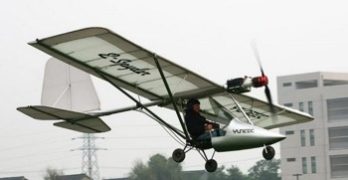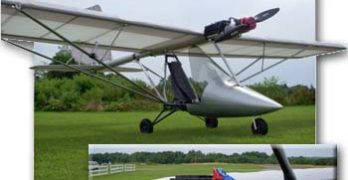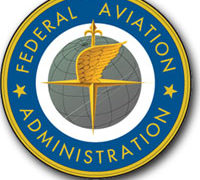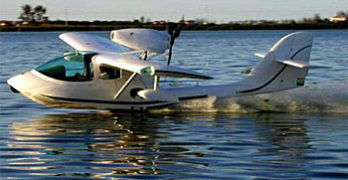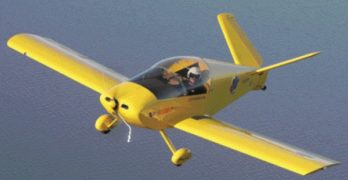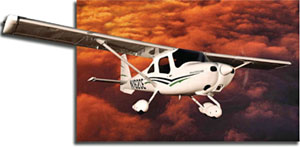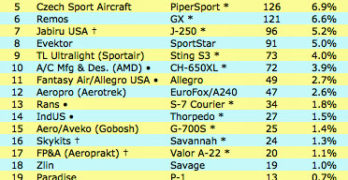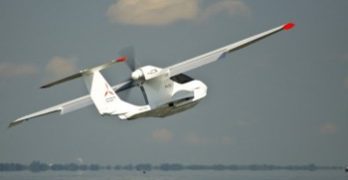Following up on my post two days ago, I’m happy to report Wired magazine just ran a story online about the Yuneec E-Spyder that Tom Peghiny of Flight Designs has been developing for them. The story has several excellent photos and it’s a good write-up, so click on over there to see how the mainstream media is helping push public awareness of electric aviation. *** Here’s the Wired video of the E-Spyder that ought to whet your appetite for electric flight…I can’t wait to get back to the states and get over to Tom’s to do my own story on it.
Update 10/29/10 — After Jim Lawrence and I did our bits on the E-Spyder and electric airplanes, Wired blogger Jason Paur wrote another piece for Wired Autopia that represents more great reading you should check out. Jason’s newest article summarizes all the electric-powered light aircraft developments quite well.
Search Results for : flight design ct
Not finding exactly what you expected? Try our advanced search option.
Select a manufacturer to go straight to all our content about that manufacturer.
Select an aircraft model to go straight to all our content about that model.
E-Spyder Ready For Prime Time
*** Everyone interested in electric flight will want to know that the E-Spyder electric-powered ultralight is poised to enter the marketplace. *** A few days ago Tom Peghiny invited me out to Woodstock, CT, about three hours drive from my house, to fly the latest prototype (v. 3) of the venerable FlightStar ultralight. *** I had to pass since I was prepping for a family visit to Germany. *** Checking in from Hamburg, I found a post on his website from my pal and LSA colleague Dan Johnson, who scooped me on the following info: *** The E-Spyder will be marketed by Yuneec, which bought the rights to produce the design from Tom and continues development on several other projects: the graceful E430 S-LSA which has won several prizes already; E-PAC power backpack for paragliders; and electric motor systems for a variety of aviation applications.
Part 103 Enthusiasm Continues; Welcome E-Spyder!
Part 103 continues to step from the shadow of Light-Sport Aircraft. We’ve had aviation’s simplest rule (worldwide!) for 27 years and with few exceptions, most of those years saw Part 103 producers laboring in near-obscurity. *** Now, however, a new flurry of activity has developed at the beautiful intersection of genuinely lightweight aircraft with electric power. The very latest to roll into the spotlight is Flightstar‘s E-Spyder, which took its first flight today. E-power from Yuneec in China meets an all-American airframe. The accompanying photos show what a clean matchup these components achieve. *** Flightstar mounted the twin lithium polymer battery packs on either side of the design’s robust main fuselage tube. Electric motors are more user-friendly in nearly every way, but you have some new learning to do. For example, experts advise never allowing lithium polymer batters to drain completely. Fortunately, the Yuneec controlling hardware provides warning systems to help you manage this task.
FAA Assessment Report
The following is taken from FAA’s “Light-Sport Aircraft Manufacturers Assessment” Final Report issued May 17, 2010. It has not been edited or changed in any way other than to format for Web posting.
Light-Sport Aircraft Manufacturer Assessment
—– Final Report —–
Issued May 17, 2010
EXECUTIVE SUMMARY
This report presents the results of the Light-sport Aircraft Manufacturers Assessment (LSAMA), (herein referred to as assessment and team). This executive summary briefly discusses the assessment team’s analysis, conclusions, and recommendations based on data collected during the assessment.
GOAL
The assessment team’s goal was to review current LSA manufacturing industry systems and processes through on-site evaluation, analysis, and reporting. The team was also tasked to recommend enhancements to industry consensus standards for LSA design, manufacturing, continued airworthiness, and maintenance and FAA processes and procedures. The team’s methodology was to collect data from LSA manufacturers, including their extensions and distributors, located in the United States.
Let’s Go Flying with Dynon’s SkyView
[UPDATE 2/9/10 — Check our new LSA Video entry showing you around the first Special Light-Sport Aircraft installation of SkyView (and Garmin 696) in a CTLS… then go watch the video below.]
*** Talk about your “Wow! Factor,” Paul Hamilton’s new video for Dynon really shows off the amazing capability of the company’s SkyView avionics system featuring synthetic vision. Go along for a flight during bright daylight and into the dimming sun over mountainous terrain. You can see the real image and compare how SkyView synthesizes it. After viewing the system in flight, I predict your choice of words will include: “Impressive!” Dynon’s SkyView setup costs about $5,500 for a single 10-inch screen, though this price is a small fraction of the cost of a Type Certificated system. *** Paul is a veteran videographer and website publisher focused on the light end of aviation. Start here and work your way around his several content websites.
Landing a Seaplane on Water… with Wheels Down!
Landing on water with your wheels down is a confirmed aviation no-no. Land planes that try it often get flipped over upside down, when escaping the cabin becomes a real concern. Every seaplane pilot I know has a mantra he or she repeats, “I’m landing on water so the wheels must be up.” Most simply don’t want to make this mistake. You can land a seaplane or floatplane on land with the wheels up. The penalty is not as great (and you’ll certainly stop fast). But you violate the wheels-into-water rule at your peril. *** Some airplanes, like the new CTLS on amphib floats, or FPNA’s Capetown, or SeaRey have a light-alert system to help you and some manufacturers offer an audio alarm. Others use mirrors or have other warning systems. *** So why would someone land a SeaMax in water with the wheels down?
Sonex Aircraft’s Y-tailed Waiex
Pedal to the Metal
The Y-Tail Waiex combines unusual style with refreshing speed.
The airlines may be suffering and
Light-Sport Aircraft (LSA) has yet to
coalesce into a coherent industry
segment, but Sonex Ltd. is having a fine run
of business. During my visit on a beautiful
fall day in Oshkosh, Sonex said it was ready
to break ground on a new hangar, the third
building of what has become the Sonex
campus on Wittman Field. At press time, it
was nearly complete.
Sonex is clearly ready for LSA, but
the company has built its enterprise on
delivering kits to the Experimental/ Amateur-
Built community. Steadily selling kits
keeps Sonex in good business shape while
LSA comes into focus. This company is well
positioned for whatever future recreational
flying holds.
$22,260. That calculates to an amazing $148
per mph.
Most of us don’t think in terms of
dollars per mph-and the comparison
with the RV-9 ignores the fact that
the RV is larger, heavier and, as a result,
more cross-country capable-but it
certainly proves that the Monnett machine
won’t take too much of your money for the
speed it can deliver.
A Raging Debate… IFR, IMC, VMC, and LSA
In the last month, I’ve received many calls and emails from more than a dozen flight schools. Here, I will try to reduce the confusion — and some alarm — regarding IFR (flying by instrument reference) and LSA.
ASTM’s F37 committee is comprised of people with technical knowledge and they have done the nearly-impossible: start with a blank sheet of paper and create aircraft certification standards for the LSA sector… in just five years, and on the leanest of budgets. These volunteers from many countries created a series of standards, one of which is the Design and Performance Standard. Following a positive vote by committee members, all have been accepted by FAA.
For more than three years another subcommittee has tried to create an IFR standard that has yet to find agreement. Until consensus may be found and to provide an interim defensive position for the committee and for manufacturers, F37 added a point to the revised but yet-to-be-accepted-by-FAA D&P Standard.
LSA Sales Continue Slowly; Change Among Leaders
While most of the LSA industry — as with most of aviation — endures unprecedented slow sales, at least two companies are showing reasonably good 2010 performances. *** Washington-based CubCrafters is the clear market leader for the first seven months of 2010, with 27 new registrations. We repeat, as always, that FAA registrations do not equal sales; individual company statistics may be different. Following CubCrafters is CSA’s PiperSport with 18 new registrations and Flight Design with an even dozen. *** All the Big Six companies remain the same — in their rank for the entire LSA fleet — though some shifting occurred: Flight Design; American Legend; CubCrafters (moving from 4th to 3rd ranked); Tecnam (3rd to 4th); Czech Sport Aircraft (builder of the PiperSport, 6th to 5th); and Remos (5th to 6th). These Big Six all have more than 100 registered airplanes in FAA’s database, though they are trailed by only a few airplanes by Jabiru USA and Evektor.
Icon A5 Update
In mid-water taxi toward its anticipated production date sometime next year, Icon Aircraft was at Oshkosh again with an impressive display booth/tent/hangar, and every time I walked by, whether early morning or late at night, there were always people ogling that beautiful airplane. *** The company has made two major design changes over the last few months which are interesting and worthy of attention. (1) The wing flaps are gone, ostensibly to “simplify” pilot operations. Company spokesfolk say they weren’t getting sufficient benefit from the flaps to justify their weight and complexity. (2) A desire to work in more spin resistance has led to airframe tweaks, including wing cuffs to lower the stall speed of the composite carbon fiber SLSA. *** I and others had wondered, after our first looks at that streamlined profile when the A5 debuted a couple years back, how Icon was ever going to get stall speed below the 45-knot minimum, even with flaps.
- « Previous Page
- 1
- …
- 104
- 105
- 106
- 107
- 108
- …
- 145
- Next Page »


